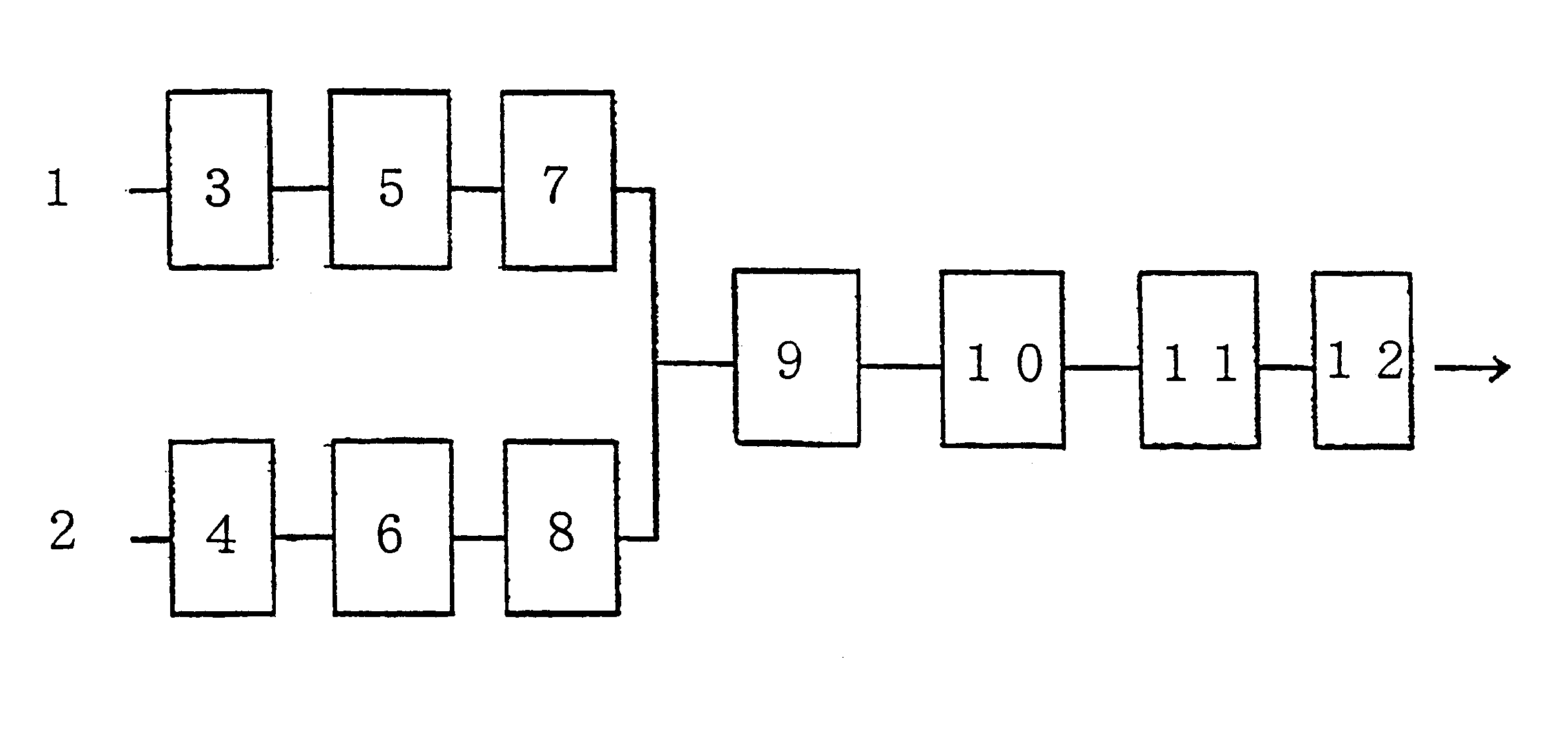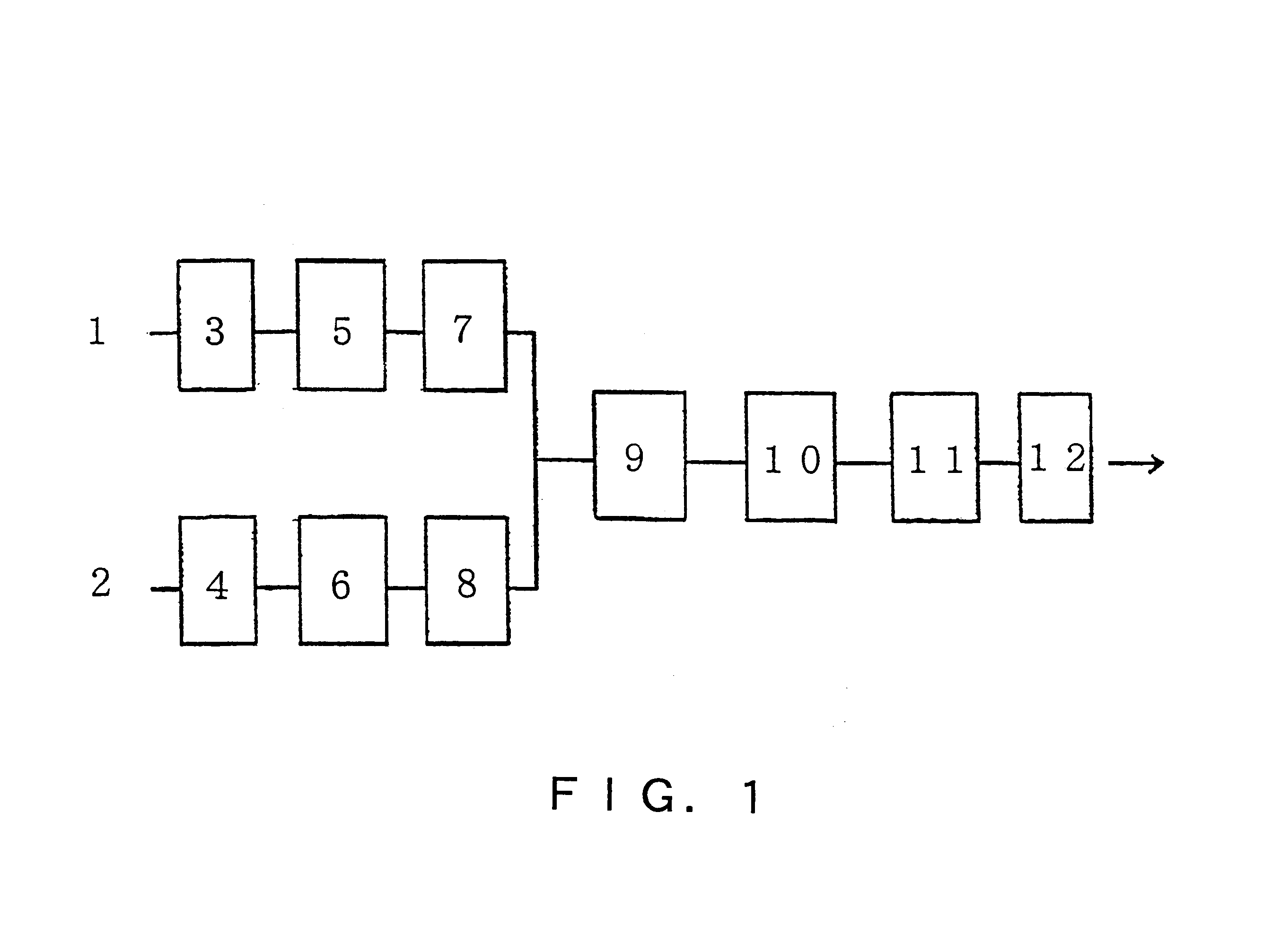Process for producing aromatic carbonate
a technology of aromatic carbonate and process, which is applied in the direction of physical/chemical process catalysts, organic compounds/hydrides/coordination complex catalysts, metal/metal-oxide/metal-hydroxide catalysts, etc., can solve the problems of difficult to separate aromatic carbonate, many problems to be solved, and insufficient yield
- Summary
- Abstract
- Description
- Claims
- Application Information
AI Technical Summary
Benefits of technology
Problems solved by technology
Method used
Image
Examples
example 2
The inside of a reactor containing 47 g (0.50 mol) of phenol, 36.0 mg (0.16 mmol) of palladium acetate (Pd(OAc).sub.2), 136 mg (0.047 mmol) of tungstomolybdenumphosphoric acid (H.sub.3 PMo.sub.6 W.sub.6 O.sub.40.30H.sub.2 O), 28 mg (0.16 mmol) of manganese acetate (Mn(OAc).sub.2), 968 mg (3 mmol) of tetra-n-butylammonium bromide (Bu.sub.4 NBr) and 7.0 g of a molecular sieve (powder having a particle diameter of 4 .ANG.) was substituted with carbon monoxide. Right after the temperature of the reactor was raised to 80.degree. C. and the pressure of the reactor was increased to 8 bar with carbon monoxide, a reaction was carried out for 9 hours at a carbon monoxide flow rate of 670 ml / min and an oxygen flow rate of 47 ml / min. When the reaction product in the reactor was taken out and analyzed by gas chromatography after the end of the reaction, 20.0 g (yield of 37.3%) of DPC was obtained. The selectivity of DPC was 98.9%.
examples 3 to 7
A reaction was carried out for 3 hours by charging 47 g (0.50 mol) of phenol, a heteropoly-acid shown in Table 1, 0.16 mmol of palladium acetate (Pd(OAc).sub.2), 0.69 mmol of benzoquinone, 0.32 mmol of manganese acetate (Mn(OAc).sub.2), 3 mmol of tetra-n-butylammonium bromide (Bu.sub.4 NBr) and 7.0 g of a molecular sieve (powder having a particle diameter of 4 .ANG.), circulating carbon monoxide at a flow rate of 500 ml / min (standard state) and pure oxygen at a low rate of 35 ml / min (standard state), and maintaining the reaction pressure at 8 bar and the reaction temperature at 80.degree. C. After the end of the reaction, the reaction product in the reactor was taken out and analyzed by gas chromatography. The results are shown in Table 1 together with the used heteropoly-acid.
example 8
40.0 g (0.43 mol) of phenol, 36.0 mg (0.16 mmol) of palladium acetate (Pd(OAc).sub.2), 135 mg (0.047 mmol) of tetra-n-butylammonium tungstomolybdenumsilicic acid ((Bu.sub.4 N).sub.4 --SiWMo.sub.11 O.sub.40), 55 mg (0.32 mmol) of manganese acetate (Mn(OAc).sub.2), 1,000 mg (3.1 mmol) of tetra-n-butylammonium bromide (Bu.sub.4 NBr) and 7.0 g of a molecular sieve (powder having a particle diameter of 3 .ANG.) were charged into a reactor and the inside of the reactor was substituted with carbon monoxide. Right after the temperature of the reactor was raised to 80.degree. C. and the pressure of the reactor was increased to 8 bar with carbon monoxide, a reaction was carried out for 3 hours at a carbon monoxide flow rate of 500 ml / min and an oxygen flow rate of 30 ml / min. When the reaction product in the reactor was taken out and analyzed by gas chromatography after the end of there action, 10.6 g (yield of 23.0%) of DPC was obtained. The selectivity of DPC was about 99%.
PUM
| Property | Measurement | Unit |
|---|---|---|
| azeotropic temperature | aaaaa | aaaaa |
| azeotropic temperature | aaaaa | aaaaa |
| temperature | aaaaa | aaaaa |
Abstract
Description
Claims
Application Information
 Login to View More
Login to View More - R&D
- Intellectual Property
- Life Sciences
- Materials
- Tech Scout
- Unparalleled Data Quality
- Higher Quality Content
- 60% Fewer Hallucinations
Browse by: Latest US Patents, China's latest patents, Technical Efficacy Thesaurus, Application Domain, Technology Topic, Popular Technical Reports.
© 2025 PatSnap. All rights reserved.Legal|Privacy policy|Modern Slavery Act Transparency Statement|Sitemap|About US| Contact US: help@patsnap.com


